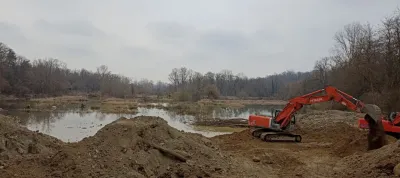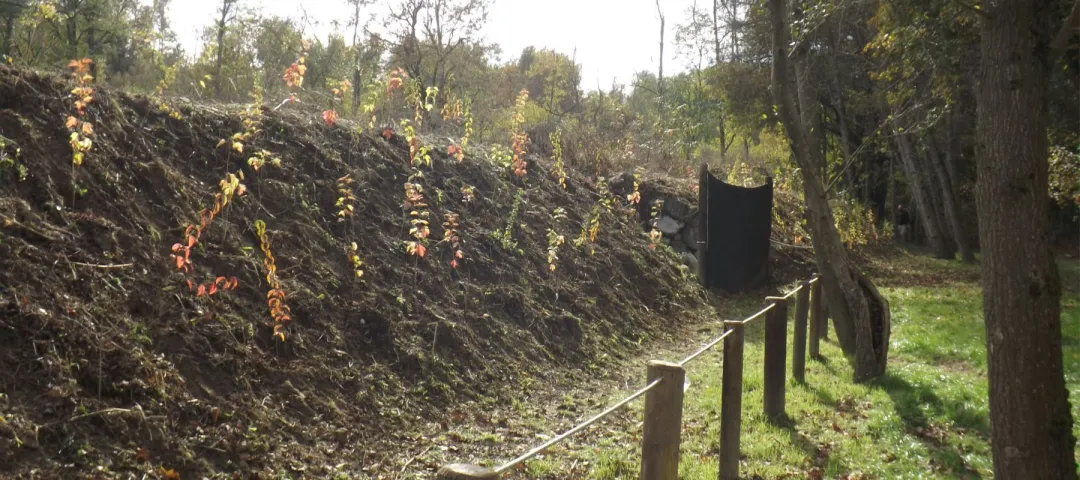General information
RDP Priority
- P4. Ecosystems management
RDP Focus Area
- 4A: Biodiversity restoration, preservation & enhancement
RDP Measure
- M04: Investments in physical assets
Beneficiary type
- Non-governmental organisation
Summary
A nature reserve in Cuneo province, southern Piedmont, is part of the Natura 2000 network and is home to around 150 bird species. Since 1979, the LIPU (Birdlife Italy) association has managed eight hectares of this reserve. Rural Development Funds (RDP) have been used to enhance the ponds and install two small wooden bird-watching observatories, which are popular with visitors.
Results
- The two ponds were improved, and their banks were reorganised.
- Invasive plants were removed.
- Two wooden huts were set up for birdwatchers, designed to be easily accessible for people with disabilities.

Promoter
LIPU (Lega Italiana per la Protezione Uccelli)
Funding
Total budget 83 566 (EUR)
EAFRD: 28 057 (EUR)
National/Regional: 37 009 (EUR)
Private/own: 18 500 (EUR)
Ressourcen
Documents
Links
Context
The Crava-Morozzo nature reserve is a 290-hectare area in southern Piedmont, northern Italy, known for its well-preserved wetlands. It is part of the Natura 2000 network and is home to around 150 bird species protected under Directive 2009/147/EC. Since 1979, the LIPU (Birdlife Italy) association has managed eight hectares of the reserve. The area, popular with birdwatchers and locals, features small ponds totalling five hectares. Improvements were needed in the pond areas to enhance conservation efforts and bird-watching experiences.
Objectives
The project objectives were to:
- Connect two small ponds to create a larger wetland area for bird feeding and reproduction.
- Perform maintenance work on the ponds to enhance bird-watching and educational activities.
Activities
Project activities included:
- Expanding the Bertero pond by approximately 0.3 hectares.
- Conducting earthworks in an area where the invasive plant species Ailanthus altissima was present.
- Dredging the Lipu Pond to remove invasive plants and change its depth.
- Setting up two wooden huts for birdwatchers.
- Improving access for people with disabilities.
Main results
- The Bertero Pond was enlarged by approximately 3 000 m2, with a volume of earth excavated and rearranged to form embankments of approximately 3 000 m3.
- The Lipu Pond, covering a surface of approximately 1 700 m2, was dredged and the volume of earth excavated and rearranged to reinforce the banks was approx. 1 500 m3.
- Approximately 400 Ailanthus altissima plants were removed.
- Four hundred fifty shrubs (e.g. cornus mas, crataegus oxyacantha monogyna and viburnum opalus) were planted and approximately 3 000 m2 of new embankments were covered with grass.
- Two stilt observatories with wooden structures were set up (one for each pond), each with a covered surface area of 15 m2. The structures have a maximum height of 6 m from the pond's bottom. The structures allow approximately 10 people to stand on them and observe the birds. Visitors and photographers appreciated the new huts, providing expanded views for all observers.
Key lessons
- The success of a project depends on closely monitoring its implementation and evaluating all activities. It is crucial to consider all aspects of the project, not just a single focus.
- Careful selection of contractors is essential, considering the environmental sensitivity of different project aspects.
- Working in collaboration with all relevant stakeholders, such as park managers, managing authorities, companies and volunteers, is highly recommended.
- One significant challenge faced was the timing of project implementation in relation to obtaining necessary authorisations and permissions. Working on Natura 2000 sites focused on bird species, construction is limited to the winter period, posing a risk of not completing the work as planned due to permit acquisition time.
"Funds of this type are not frequent, and quite few compared to the actual needs. They support no-profit activities therefore it would be interesting to be able to include a fee for their coordination. Furthermore, associations often cannot usually access these funds, greatly limiting interventions in favour of the environment."
Oasi Cravamorozzo

